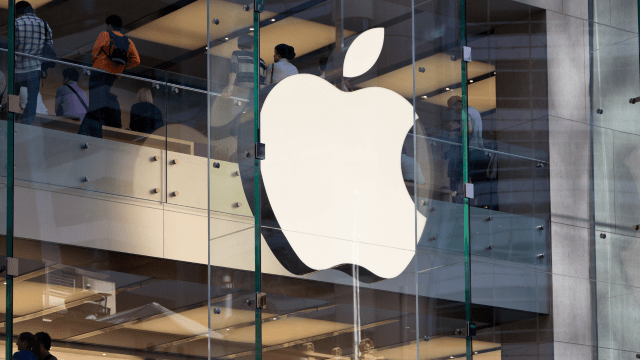Apple is usually tight-lipped when it comes to releasing detail on absolutely anything before the ‘thing’ is officially announced. But there’s no shortage of buzz around its rumoured VR/AR headset.
It was reported back in August that the phone and computer company filed patent names for what could be its VR/AR headset, according to Bloomberg. Apple itself didn’t make the filings, but it’s similar to Apple’s patent filing strategy that it has done with other products.
“Reality One”, “Reality Pro” and “Reality Processor”. Bloomberg reports that patents were filed in the U.S., EU, UK, Canada, Australia, New Zealand, Saudi Arabia, Costa Rica and Uruguay.
There’s no guarantee that these are, in fact, the real names of Apple’s upcoming VR headsets, but Bloomberg’s Mark Gurman has consistently been a reliable source for Apple leaks and rumours.
Editor’s note: Does it play games? Apple could potentially compete in that space. –David.
Also Editor’s Note: Maybe, we’re still waiting to hear about that. For now, here’s what we believe it does do. — Asha.
This weekend, however, more details of the headset were sprinkled out, including the fact it may boast iris-tracking. A new report in The Information revealed the headset will look like a pair of ski goggles. It will be made of “mesh fabrics, aluminium and glass” and it will be thinner and weigh less than the recently announced Meta Quest Pro.
As detailed by ArsTechnica, the new headset will scan a user’s irises so they can be recognised and log into their individual accounts the instant they put on the headset. This feature would work for multiple users, making it straightforward to pass the headset from one person to another, for example. Additionally, the iris-scanning tech will be used to authenticate payments, the reports indicated.
Apple 1, Zuck 0.
The VR headset will also reportedly allow users who wear glasses to “magnetically clip on prescription lenses inside the headset.”
These tidbits all follow through with what we heard in February.
In June, we heard that the VR/AR headset could arrive as early as January 2023. Although, the timeline for Apple’s upcoming headset release is something of a moving target.
Following reports from May that mentioned trademark filings, in a state of the VR industry blog posted to Medium, analyst Ming-Chi Kuo predicts that Apple’s entry into the space will be a catalyst for the growth of virtual and augmented reality, and dubs the company a “game-changer for the headset industry.”
According to reports from earlier this year, Apple wants it known that it isn’t keen on following Meta into the metaverse when its AR headset is released.
In a newsletter from Bloomberg’s Gurman, we learned Apple has rejected the idea of an all-virtual world for its long-rumoured mixed reality headset. As you all know by now, an all-virtual world is the premise for the metaverse. According to the report, the very idea of a metaverse-like existence for the VR headset is “off limits”. Instead, it says the focus of Apple’s VR headset would be on short stints of communication, content viewing and gaming.
It sounds like Apple CEO Tim Cook won’t follow the lead of Facebook, er, Meta, and just about every other company that has chimed in recently to discuss the ways they can bring us closer to a poorly defined, ill-conceived future where the physical and digital world melt together via the use of VR, AR and mixed reality.
When we say ‘mixed reality’ this usually means augmented reality/virtual reality. There’s only a number of ways the device can look, but as the device is yet to be officially confirmed, we’re left to assume it will be a VR headset as you know it, but smothered in the Apple feel.
Though Apple hasn’t confirmed any details about its headset, reports have painted a vivid picture of what to expect. The most telling comes from The Information, which cites anonymous sources as saying the headset will run on a 5nm TSMC chip (with similar power to the M1). The headset will reportedly include two 8K displays, more than a dozen cameras for hand-tracking, and will retail for upwards of $4,000. Oh, it’s expected this thing will also incorporate 14 cameras.
But Kuo thinks the company is already working on a second-generation AR/VR headset set for a 2025 release, this time featuring both a high-end and a more affordable option.
Initial reports indicated you might require an Apple iPhone to enjoy the VR headset, but it seems this will just be the same as any other Apple device: the experience is better with an iPhone, but not a requirement.
“All eyes will be on Apple as it launches its first headset next year,” IDC research director Ramon Llamas wrote earlier this year. “Further iterations will likely show evolution that will grow by leaps and bounds.”
Rumours about Apple’s mixed reality headset have been swirling for over a year and we’ll keep you updated as soon as anything new bursts through the noise.
This post has been updated since it was first published.

Leave a Reply